10 of the best plants for an English garden look – even if you live in a hot climate
Discover the dreamiest flowers for classically romantic vibe, plus their drought tolerant lookalikes
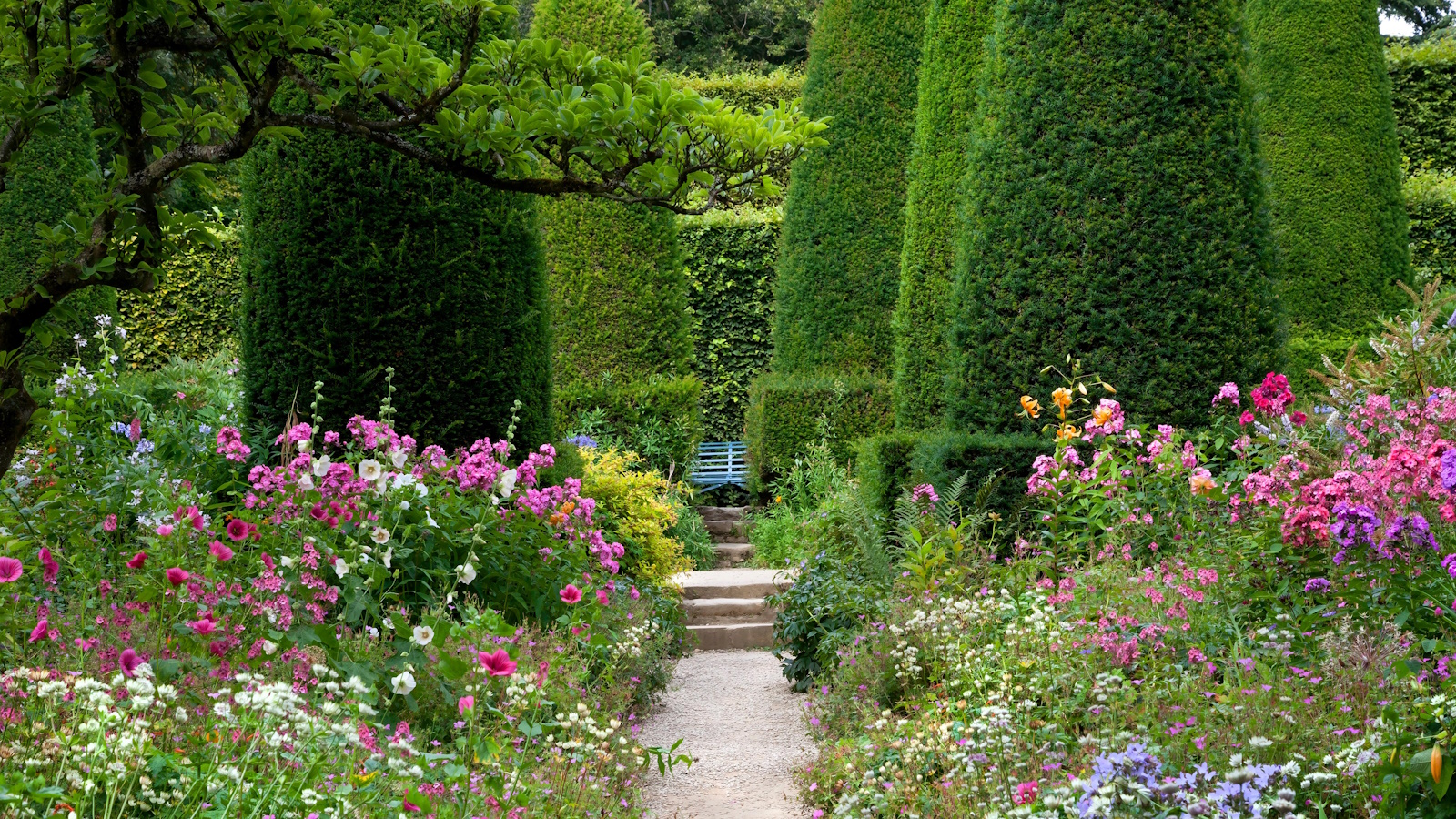

If you love the floriferous, informal charm of an English garden you may instantly visualize a haze of perfumed roses, floral spires and soft leafy ground cover. But if your yard is prone to hot spells and little rain, achieving this look can be tricky. The secret to success lies in a little forward planning; clever plant choices and some smart flower substitutes can help adapt this sumptuous gardening style.
Knowing the key plants and flower types for a specific style of garden is half the challenge, the other is working out how to choose the right ones for your location – taking the soil type, hardiness zone, climate and aspect into consideration. Team this with adding key garden features - a wooden trellis, ironwork arches, sweeping benches and grassy lawns are among the most quintessentially English garden ideas - and you have the perfect template.
If you're looking for some English garden planting inspiration, that will also cope with unpredictable temperatures, have a read of our expert recommendations.
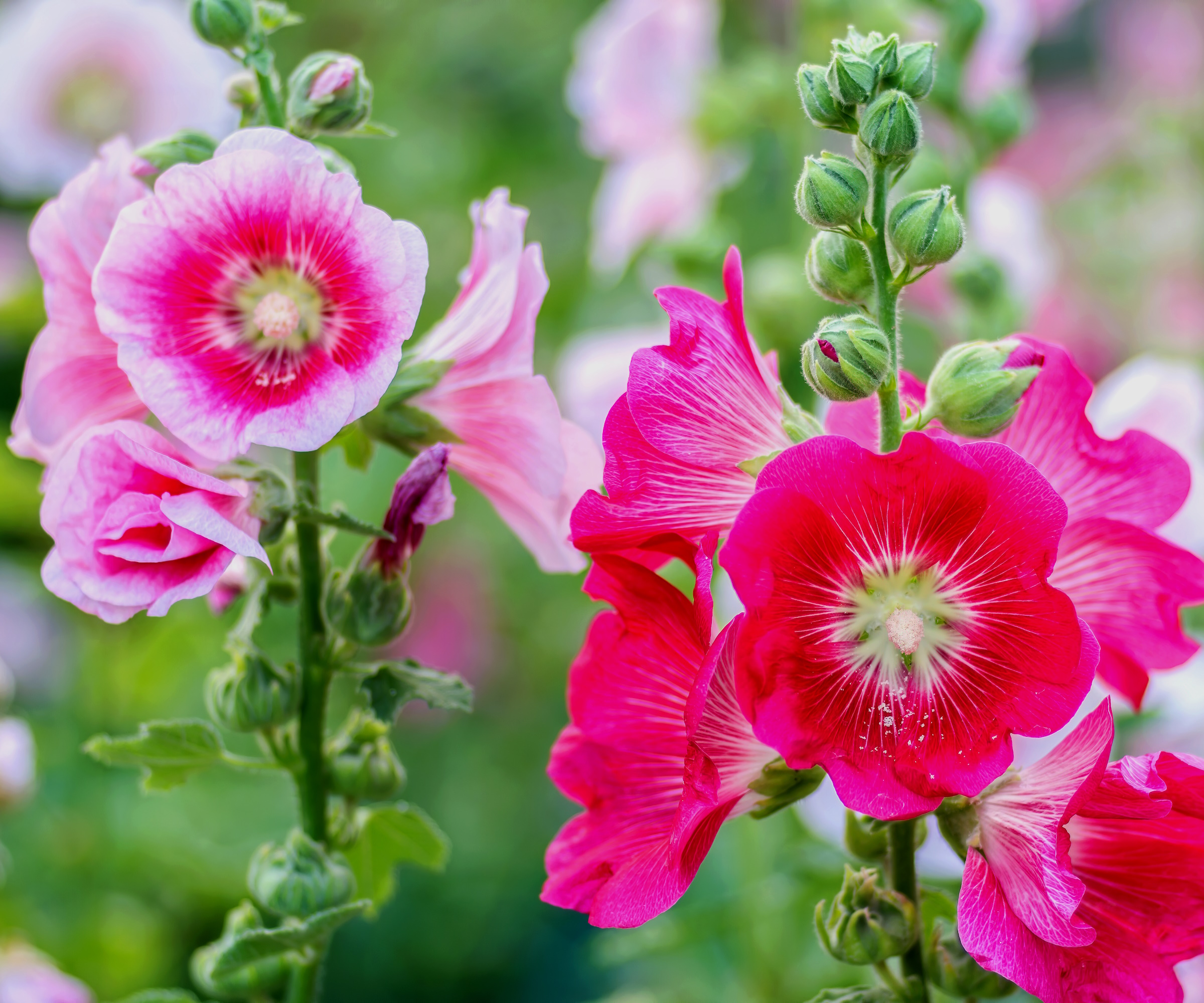
How to choose plants for the English garden look
These 10 plants will work hard to create a romantic aesthetic, even in drought-prone backyards.
1. Lavender
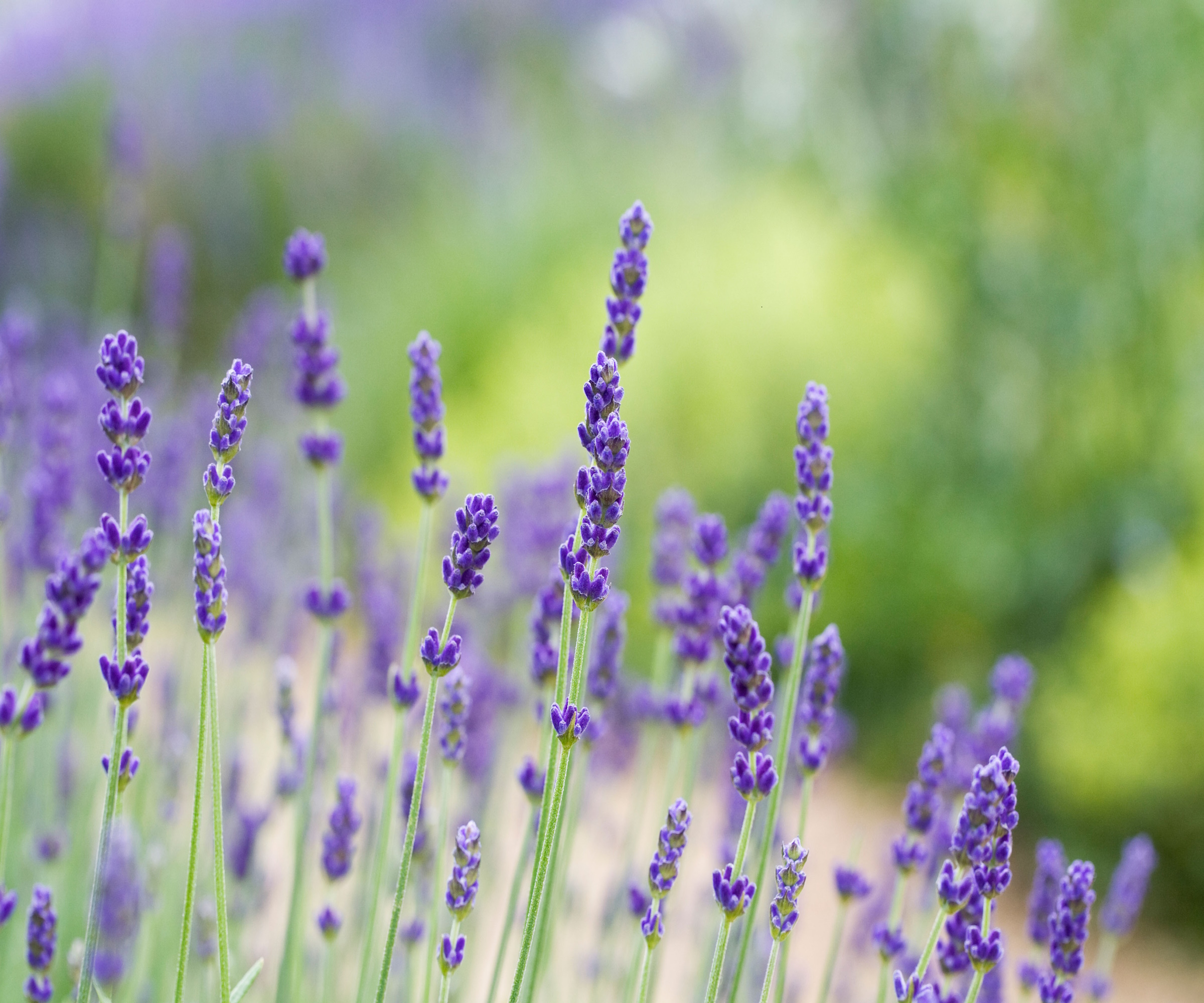
With its dreamy fragrance and haze of purple spires, no English garden is complete without lavender. If you don’t mind bees, lavender can be a fantastic choice as it’s drought-tolerant, deer-and rabbit-resistant, and has a delightful fragrance.
Perfect for planters on sun-drenched decks and terraces, it needs little attention other than an annual clip after flowering in late summer or fall. ‘Plant it along borders or pathways to infuse charm into your space,’ suggests Jonathan Ames, Lead Landscape Designer at Bacqyard.
With a wide number of different types of lavender available its worth knowing that some cope better in cooler climates while others are happy with humidity. English Lavender or Lavendula angustifolia is hardy, robust and will survive cold, damp conditions while French lavender and Lavendula dentata prefer a hot and drier environment.
Design expertise in your inbox – from inspiring decorating ideas and beautiful celebrity homes to practical gardening advice and shopping round-ups.
You can find lavender starter plants widely available at Walmart.
2. Roses
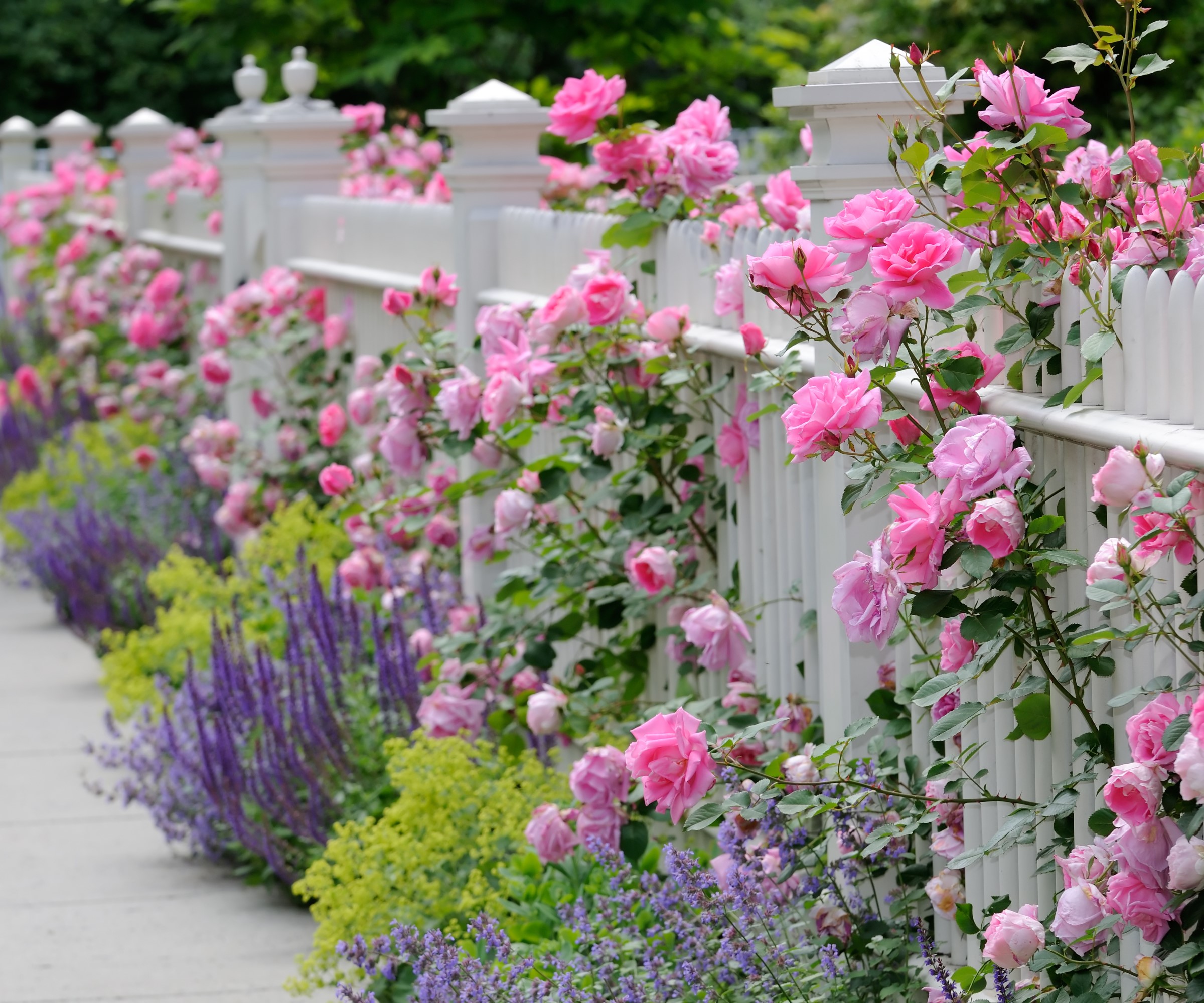
Name one English garden flower and chances are a rose will spring to mind. With its silky petals, cupped blooms and unmistakable heavenly scent, it has a huge presence in any summer garden.
‘When I envision an English garden, certain plants immediately come to mind and Roses are quintessential’, says Jonathan Ames. ‘Timeless favorites such as 'Gertrude Jekyll' and 'Graham Thomas' boast wonderful blooms and delightful fragrances.’
Plant expert Katie Sunderlage agrees, 'English gardens often use arbors or pergolas over paths to create a warm, inviting feeling throughout the garden or to create a beautiful entrance to the garden. Climbing Roses are offered in a variety of bloom types and colors.'
Thriving in the ever-varied Great British weather, you could be forgiven for avoiding planting these blooms in drier and harsher climes, but there are several types of rose that are surprisingly drought tolerant.
Old garden or heirloom roses such as 'Damask', 'Gallica' and 'Alba', are much better at coping with poor soil and minimal water than modern day hybrids. Highly pest and disease resistant, they may only flower once a year, but their spectacular blooms are dramatic and memorable.
Moss roses – such as 'William Lobb' and 'Old Pink Moss' are another robust option, Popular in Victorian England - Rosa mucosa - with their exceptionally strong fragrance, ruffled petals and hairy stems tend to be vigorous and unfussy about their soil conditions.

With over 20 years in the industry, Jonathan is a landscape designer at BACQYARD, combining his deep-rooted passion for plants with extensive experience across the country. His expertise ranges from nurturing houseplants to crafting expansive landscapes.
3. Foxgloves
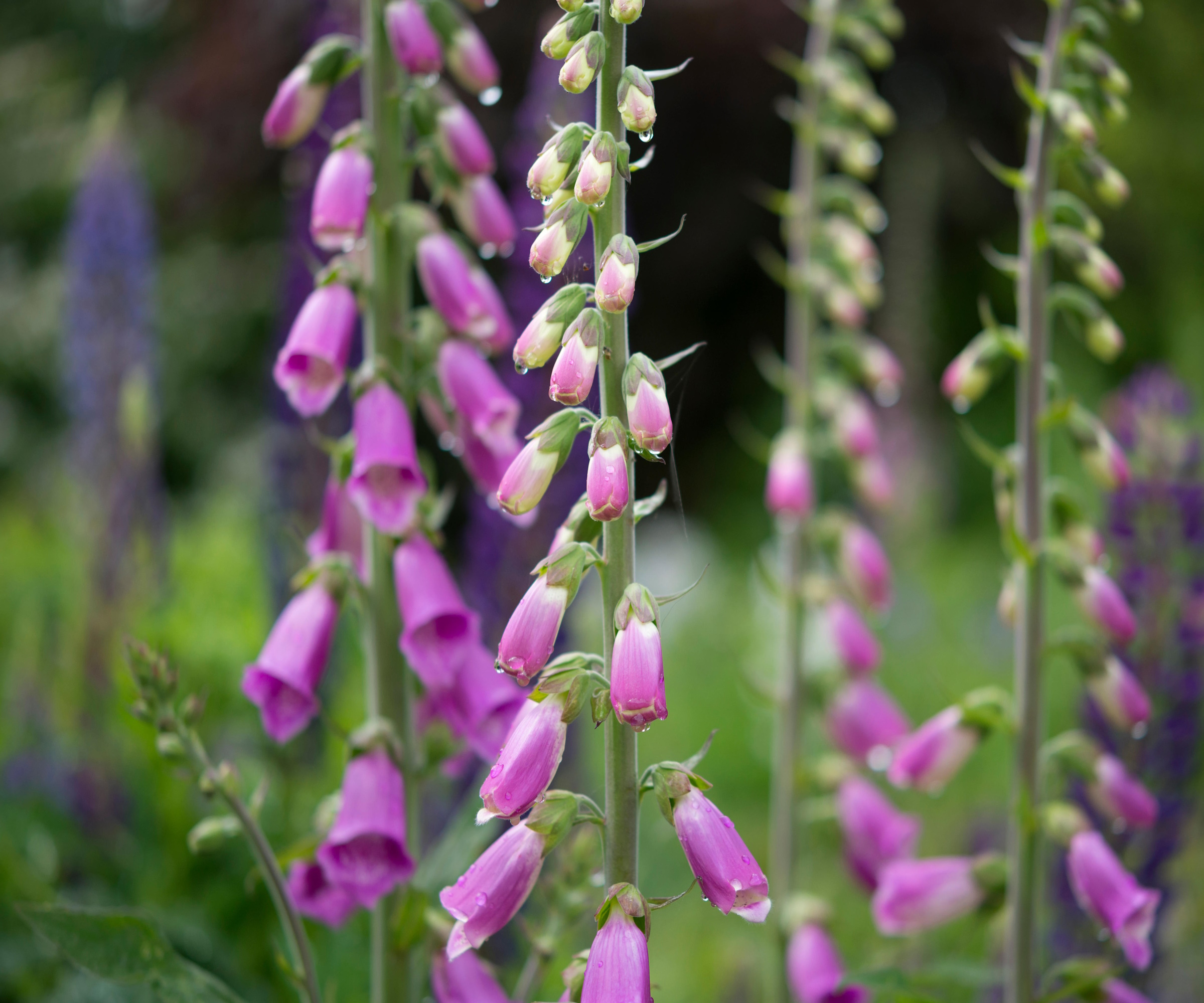
‘Foxgloves are a favorite in English cottage gardens with their graceful spires of tube-shaped flowers in shades of pink, purple and white,’ says Jonathan Ames. Grouped together, these graceful plants instantly add impact and height and are hugely popular with pollinators. They naturally thrive in woodland, preferring a damp and humus-rich soil and not well suited to dry conditions.
For a sky-racing bloom that is much happier in a warm, dry environment, try Verbascum. Also known as mullein, these plants can reach up to 6.5ft tall.
Grey, leafy rosettes hug the ground and seek out their nutrients via deep tap roots. Stand out varieties include ‘Pink Petticoats’, ‘Jackie’ and the slightly shorter, yellow and burgundy ‘Dark Eyes’.
4. Dianthus
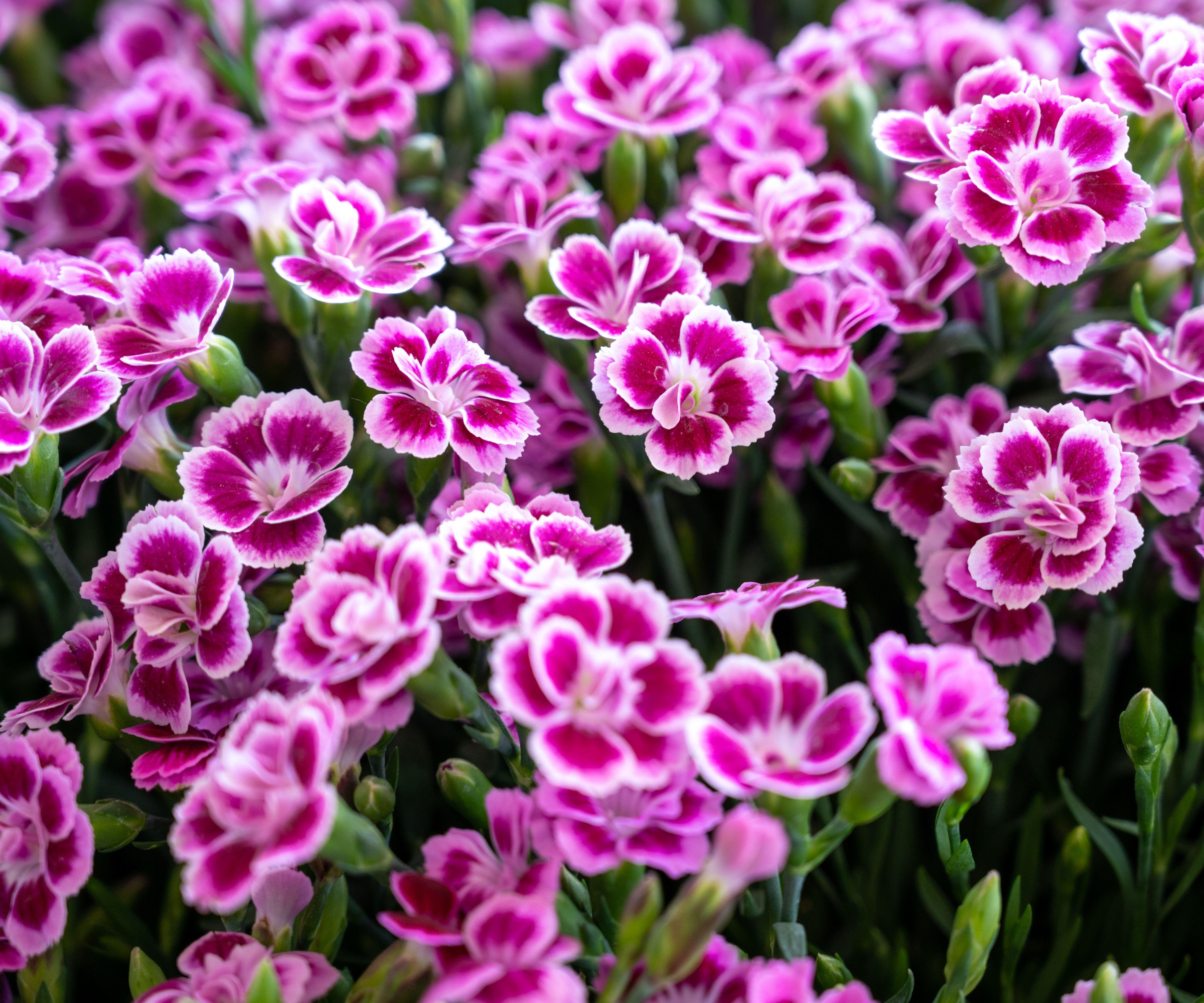
A real old-time favorite, dianthus or ‘garden pinks’ have been grown in cottage gardens for centuries, partly for their easy-going nature and vivid color but also for their delicious clove-like scent. The blooms with their serrated edge petals and intricate markings shine out of borders in shades of pink, magenta, white and salmon pink.
‘Dianthus offer a beautiful fragrance that enhances the romantic feel of an English garden and are very hardy in many climates making it incredibly versatile in a wide variety of locations,' says Katie Sunderlage. 'Plant in full sun for best results in well-drained soil.’
With their silver-blue stems and foliage, dianthus is well adapted to growing in hot, dry conditions. They are not long-lived perennials though, becoming straggly in just two or three years, but fortunately they are easy to propagate from side shoots.
You can find dianthus starter plants at Walmart.
5. Sweet pea
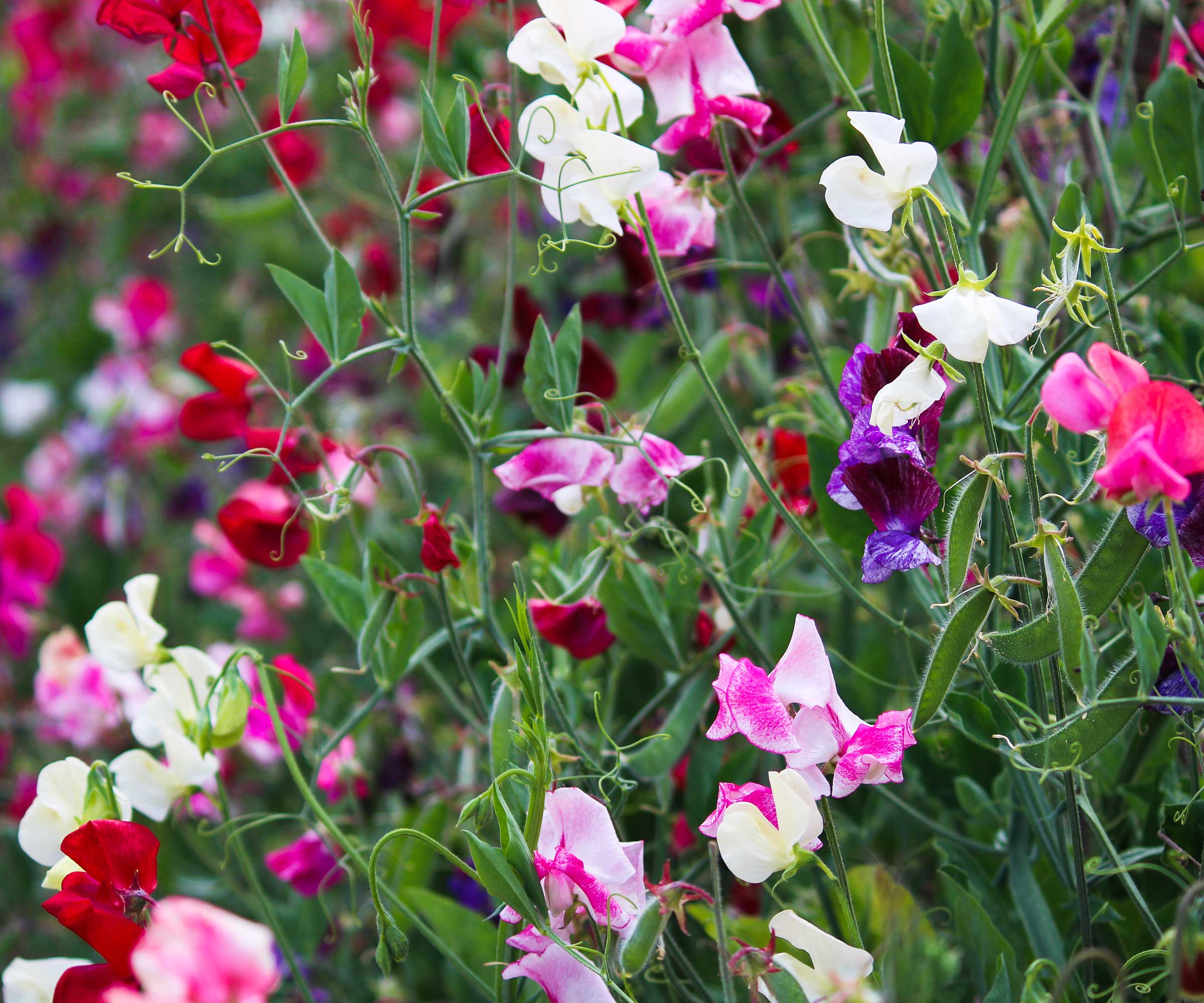
Known for their delicious perfume and vibrant showy blooms, sweet peas are a must in any English cottage garden.
Spiralling up wigwams, clambering over trellis or sprawling across walls and fences, they are a quintessentially English summer bloom with an old-fashioned charm all of their own.
Happiest growing in full sun, with their roots in a rich but well drained soil, annual sweet peas can tolerate some heat but are not quite as resilient as the everlasting sweet pea – Lathyrus latifolius.
Ok, these plants only produce blooms in a restricted palette of pink or white, and they have no fragrance, but they are fast growing, have slightly tougher foliage than annual Lathyrus odoratus, and will provide endless blooms if regularly deadheaded. Thanks to their deep tap roots, these varieties can seek out water sources at a greater depth than their annual cousins, helping them to cope with sudden dry spells.
6. Delphinium
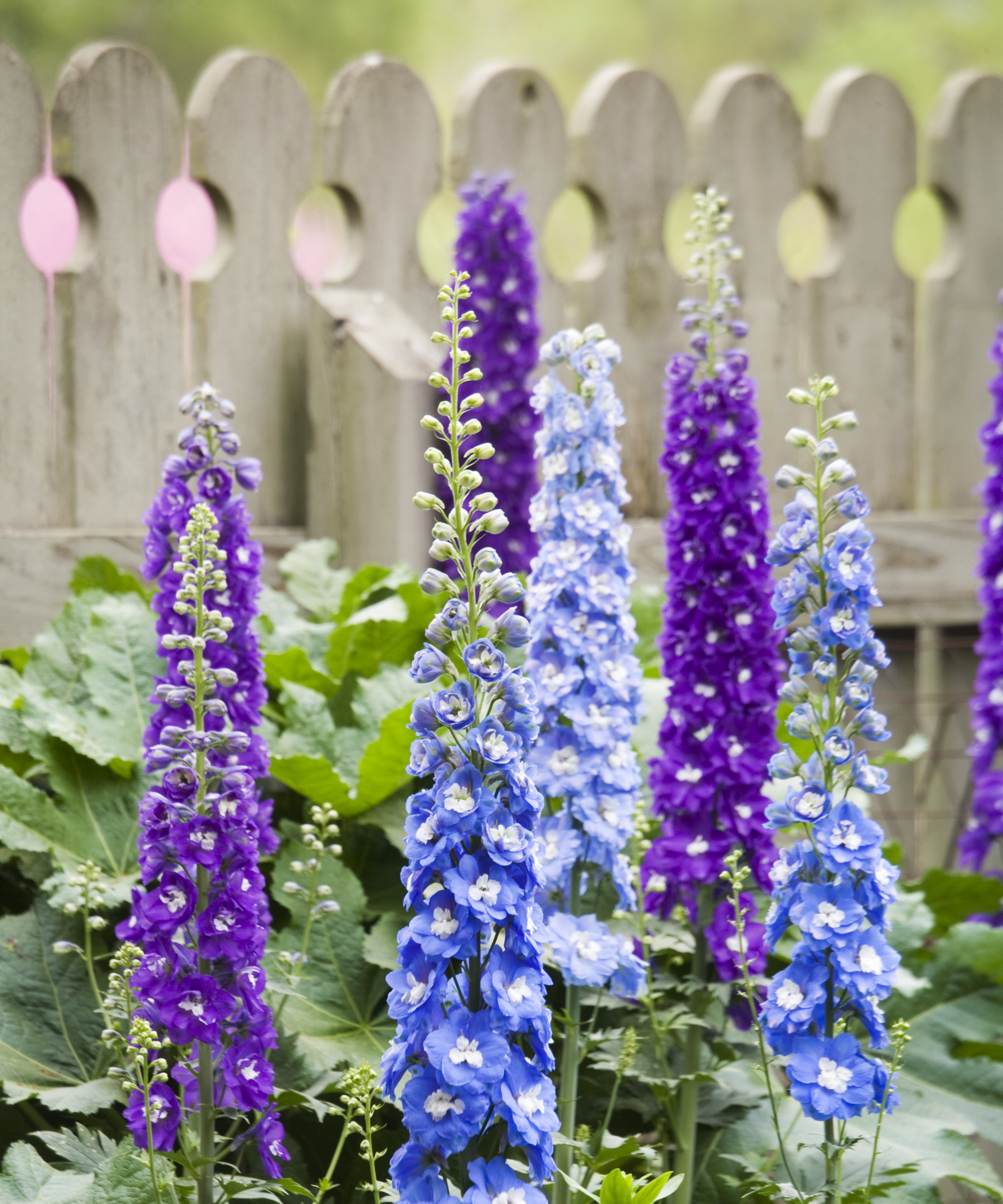
An unsung hero of the English cottage garden, perennial delphiniums add instant summer drama and a dash of brilliant color.
‘These elegant flowers, with their upright stems, bring vertical interest to the garden landscape,’ says landscape designer Jonathan Ames. ‘Their blue, purple, or white spikes are truly captivating.’
With flower spires reaching up to 3ft encircled with masses of single or double petalled blooms, these majestic beauties contrast beautifully with other cottage garden favorites.
‘What’s perfect about delphinium is they are cold hardy in a wide range of climates, making them ideal for different locations,’ says Katie Sunderlage. 'English gardens tend to have an abundance of colors and textures, planting items close and freely with no discernible pattern. Since delphinium need protection in wind, they suit this style of planting, relying on other plants for shelter. This helps create the drifts of heights, colors and textures that create an English cottage garden.’
Perennial delphiniums prefer a sunny spot with rich, well-draining soil and sadly will begin to wilt during hot, dry spells however their smaller, annual relations larkspur are slightly more tolerant.
Shorter – measuring around 1-3 ft tall – with smaller, more finely cut foliage they can cope for short spells with minimal watering but are happiest in moist conditions.

Operations Manager at Holland Group, managing the customer service department and purchasing. Katie has been in the green industry since 2005 in the Greater Milwaukee area, earning her degree in Horticulture in 2008. She has been able to share her love for plants working in multiple garden centers, in sales positions and most recently in an online retail platform at Holland Group.
7. Lilac
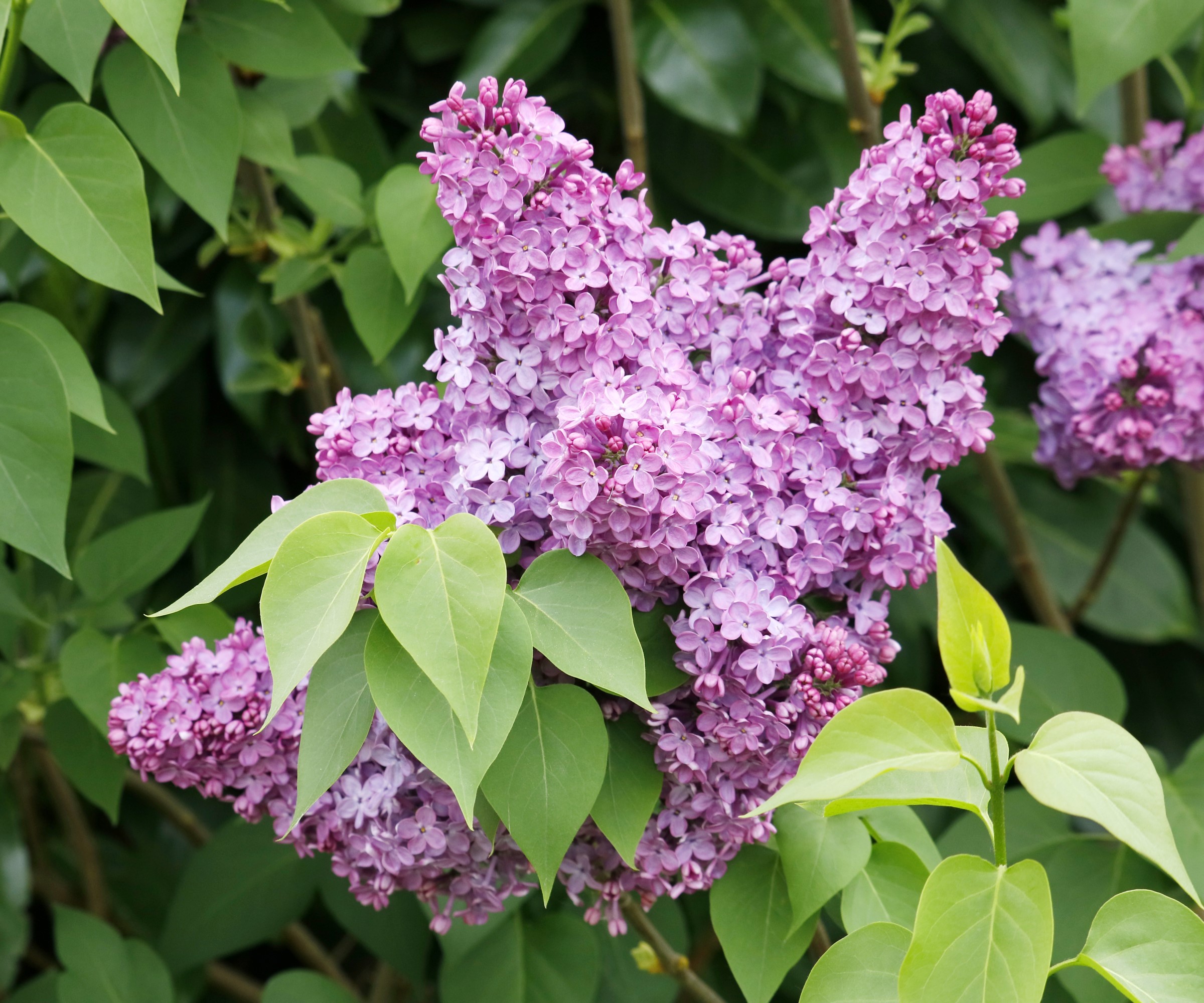
Lilacs will fill your yard with their deliciously sweet scent and delicate, arcing purple or white blooms from April to June. A spectacular sight, these flowers are hugely popular with pollinators – including hummingbirds, moths, butterflies and bees.
Drought tolerant and undemanding, once established these shrubs and trees can cope with temperatures below zero up to 76F.
They do dislike high humidity or extremely hot conditions, though, as this can lead to mildew and disease. Learn how to fertilize lilacs to keep these plants in the best of health, which in turn will make them more resistant to dry spells.
8. Hollyhock
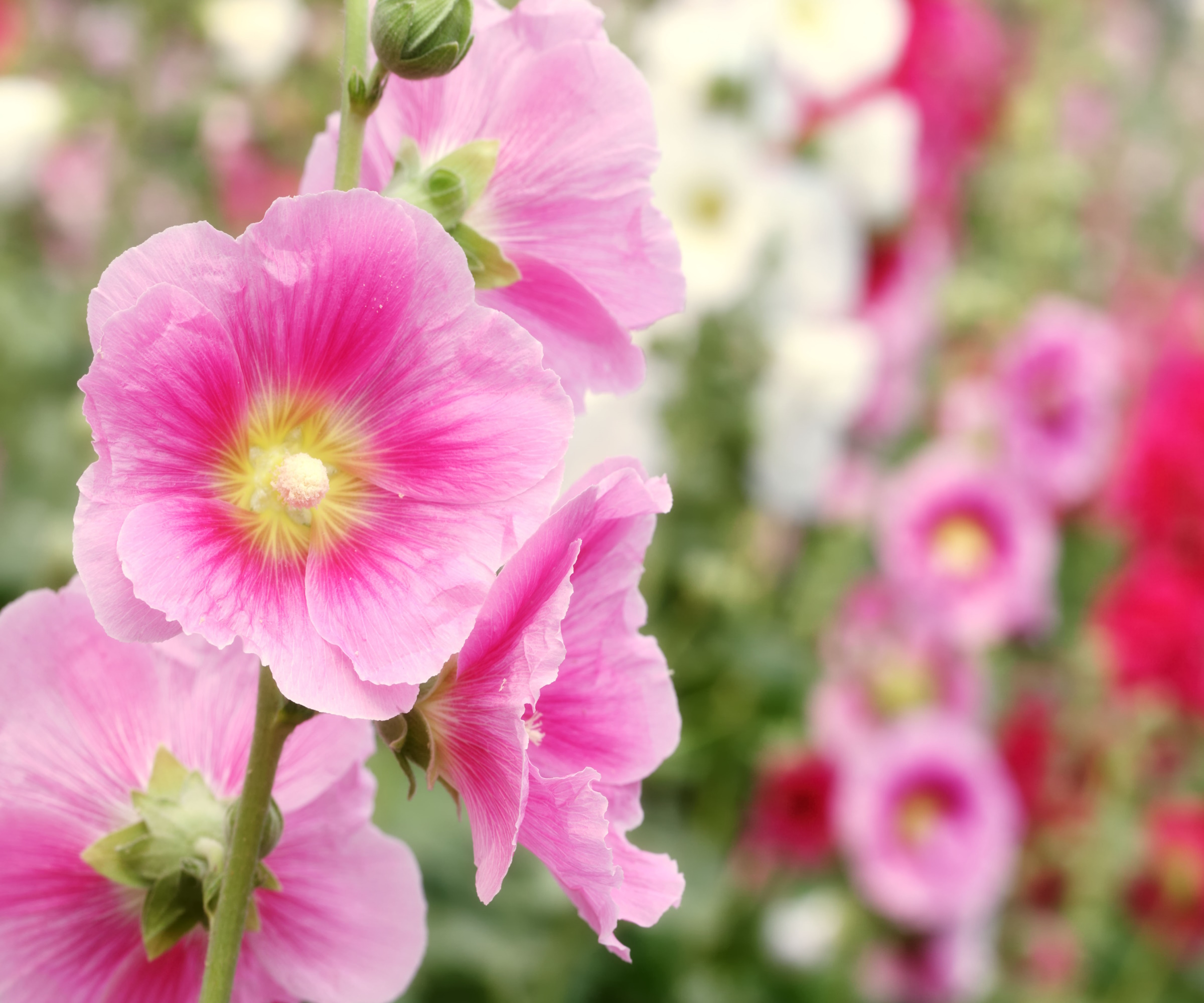
These towering spires of bright and breezy blooms have a timeless charm that oozes cottage style. Reaching up to 3-8ft high they have a huge impact in the summer garden, whether lining paths or dotted in amongst an herbaceous border.
Regarded as biennial and short-lived perennials, hollyhocks or Alcea have the welcome habit of setting seed in random cracks and gaps, adding to the informal charm of a typically romantic English garden.
With a single long tap root – similar to foxgloves and delphiniums – these plants can cope with some dry periods but are not especially drought tolerant.
For a similar and more reliable bloom, try mallow. Available as a semi hardy or evergreen shrub there’s plenty of choice from pink tree mallow, Lavatera maritima, to the native American globe mallow, Sphaeralcea ambigua, with its mostly orange blooms and silver-green foliage. You can find mallow seeds at True Leaf Market.
9. Hardy geranium
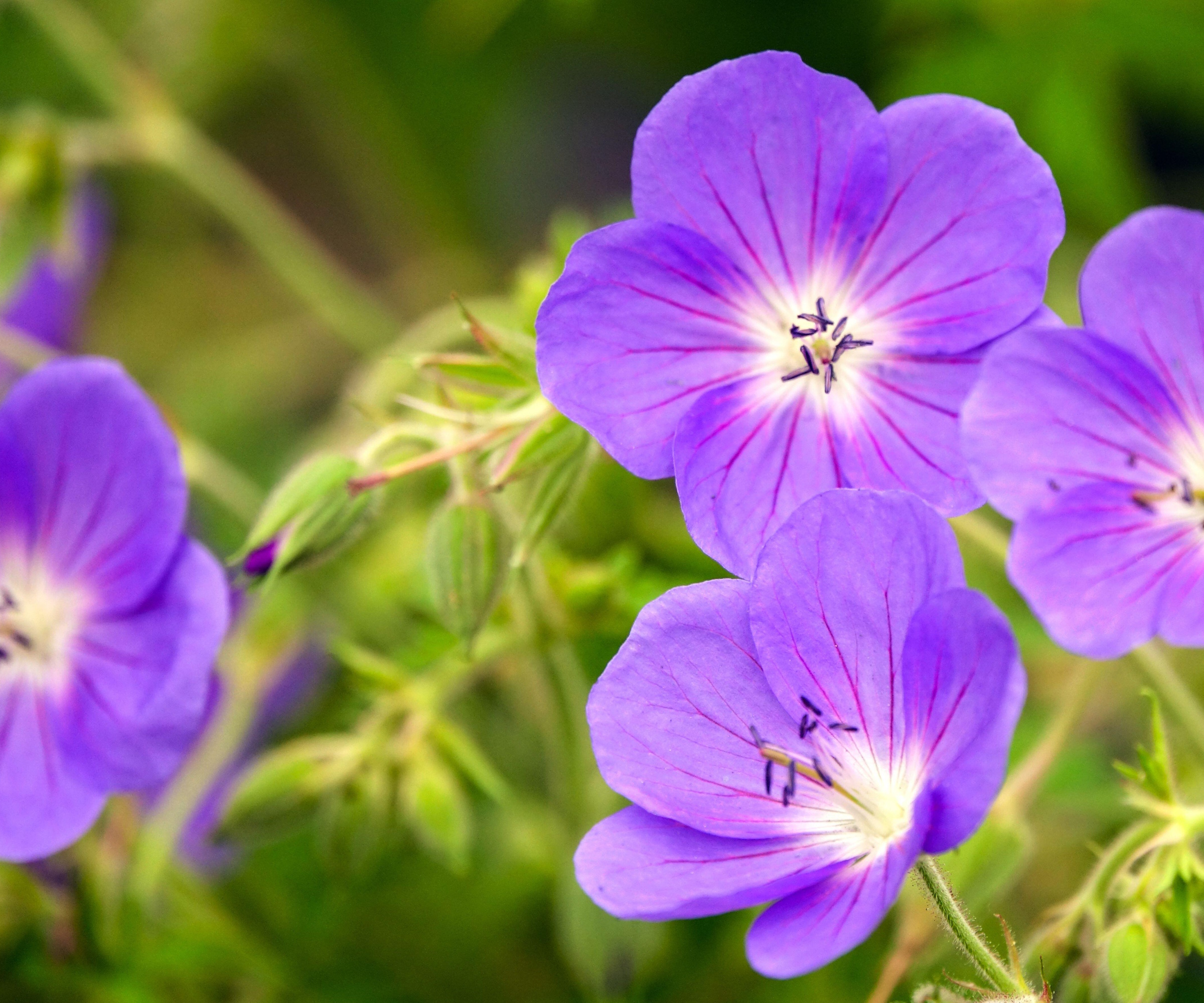
Not to be confused with the more brittle, upright geraniums, or pelargoniums, synonymous with the Mediterranean, these sprawling ground cover perennials produce continuous open flowers from spring through to fall.
Also known as Cranesbill, they are much loved for their gentle mounds of deeply lobed foliage and simple blooms in white, pink, blue, purple to deepest burgundy.
Within the geranium genus there around 300 species to choose from, but some are better equipped to deal with hot, dry spells than others. Dalmatian cranesbill hails from the Balkans, has pale pink cupped flowers set against evergreen leaves. Only reaching 4 inches tall, it forms low creeping mats that help to conserve moisture.
Giant herb Robert or Geranium maderense has evolved to deal with hot, dry conditions. A short-lived perennial, it hails from Madeira and is unfussy about position or soil type, producing bright pink blooms with dark centres. Flowering and growth will slow during very hot spells but some simple hardy geranium care and guidance – such as deadheading and division - the plant will quickly rejuvenate.
10. Salvia
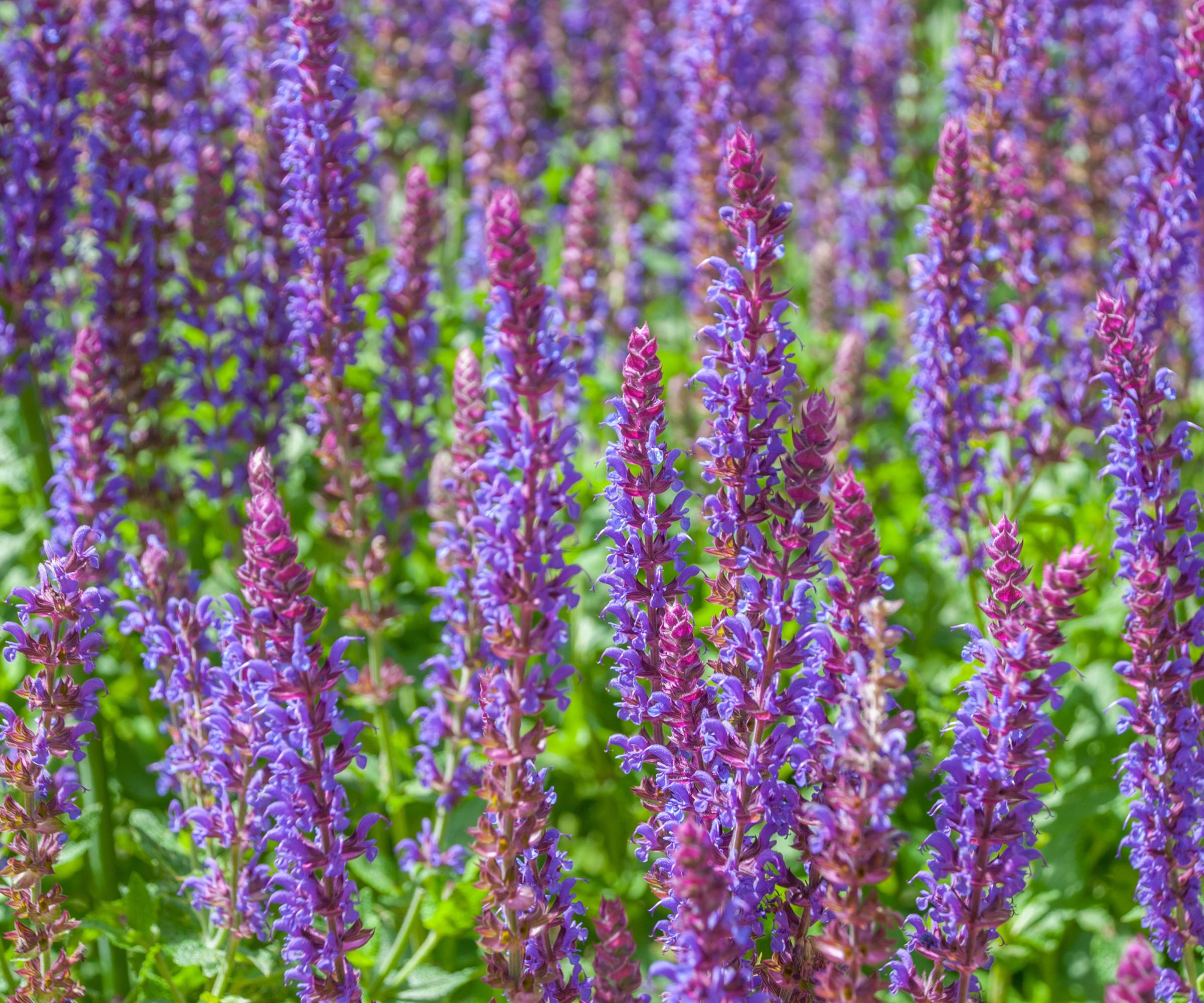
As Mediterranean plants, salvias naturally love sunny, dry conditions in free-draining soil. Traditionally known as sage, these plants with their colorful lip-shaped blooms are closely related to mint. Shrubby herbaceous varieties include Salvia sylvestris, Salvia nemorosa and Salvia pratensis, and will happily cope with temperatures as low as -76F.
Other, more tender and decorative types such as many Californian and Latin America natives, do require protection under glass if conditions drop below 32F.
Adored by pollinators, including bees, moths, butterflies and hummingbirds, these wiry plants are surprisingly easy to care for and need little attention other than clipping back in spring - as new growth appears - and after flowering in July/August. They are also one of the longest flowering stars in the herbaceous border.
Stunning blooms with good drought tolerance include Salvia x jamensis ‘Sierra san Antonio’ with its peach and cream-yellow flowers, ‘Javier’ with deep blue, purple blooms on near black stems and stunning ‘Silas Dyson’ with crimson petals and claret tipped stems. Salvia 'Bumblesnow', available from Nature Hills, is also highly heat and cold tolerant and will dazzle with its white blooms and neat, upright habit.
FAQs
Which English garden plants are drought resistant?
We may think regular rainfall is essential for creating an English cottage garden full of lush green growth and a vibrant array of different blooms, but there are many plants that can be used in drier areas to similar effect.
For towering flower spires try verbascum, verbena, agastache along with catmint, lavenders and salvias. Floral fireworks that are happy in dry spots include agapanthus, gaura and coneflowers, while for low ground cover hardy geranium, creeping rosemary and foamflower are smart choices.
While it’s not possible to predict drought conditions, being mindful of the possibility will you help future proof your garden. By choosing plants that are much more tolerant of erratic rainfall or minimal watering you can save money, stress and set about cultivating a beautiful outlook. Check out more drought tolerant landscaping ideas and check out which drought tolerant trees will thrive in your yard.

Journalist Jill Morgan has spent over 20 years writing and editing gardening, interior and property features. Titles she has worked on include The English Home, House Beautiful, Ideal Home, Houzz and Modern Gardens and she writes regularly for H&G as a Contributing Editor. Whilst she is a dab hand at renovation projects and DIY, she is happiest when out digging in the garden or planning a new border.